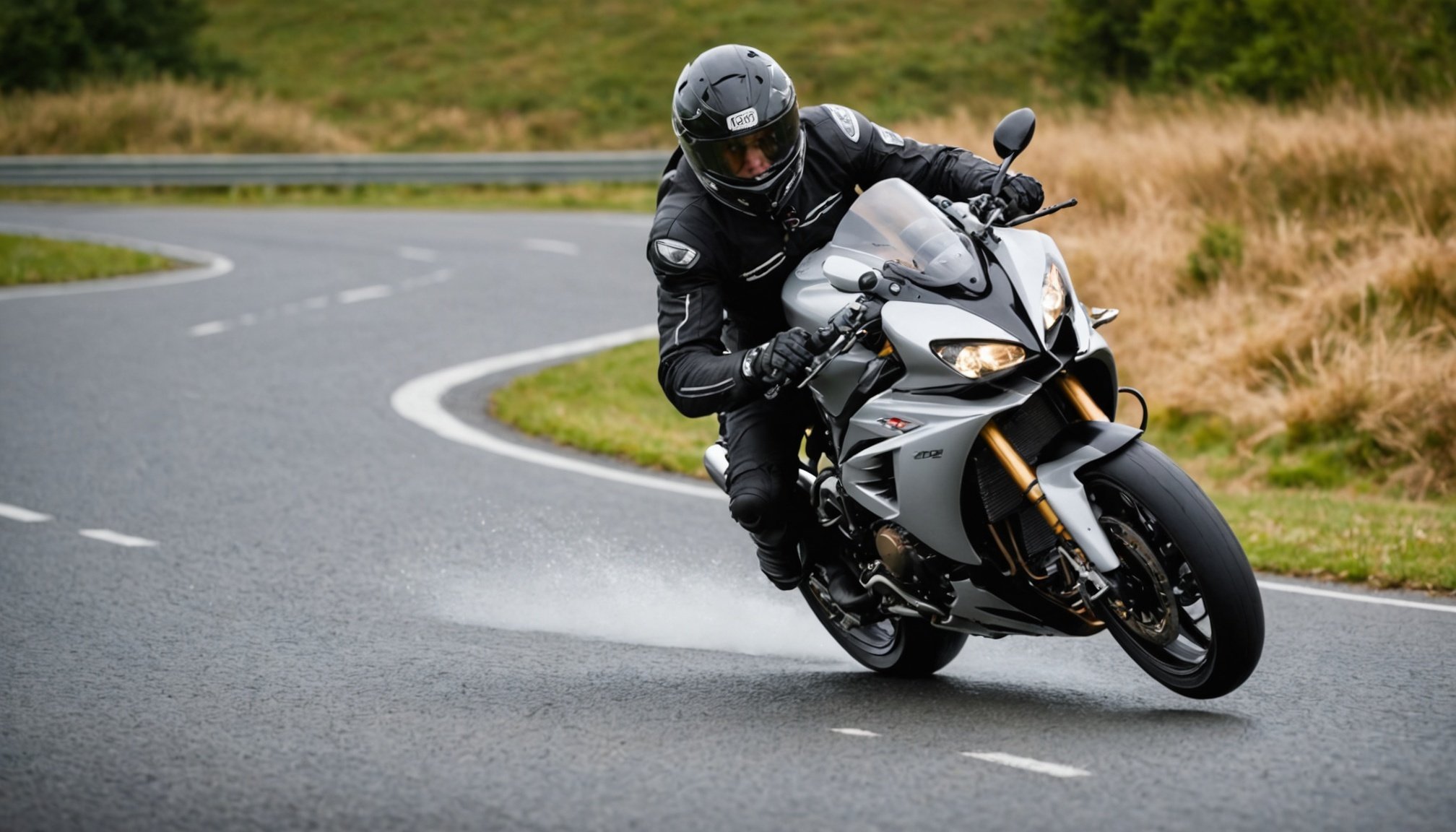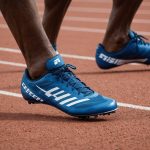Regaining Control of Your Sport Bike After a Skid: Essential Tips for UK Roads
Understanding the Risks and Preparing for the Worst
Riding a sport bike can be an exhilarating experience, but it also comes with its share of risks, particularly when it comes to losing control and skidding. Whether you’re a seasoned rider or just starting out, knowing how to handle a skid is crucial for your safety and the safety of other road users.
The Importance of Braking Technique
Braking is one of the most critical aspects of riding a motorcycle, especially on UK roads where weather conditions can be unpredictable. Here’s what you need to know:
In the same genre : Unlocking Peak Performance: Ideal Engine Configurations for Sport Bikes in the UK
- Proper Braking: The key to avoiding skids is to use both the front and rear brakes correctly. The front brake provides about 70% of the stopping power, but it’s essential to use it in conjunction with the rear brake to maintain stability.
- Gradual Braking: Sudden braking can lead to wheel lock-up, especially on slippery surfaces. Practice gradual braking to give yourself time to adjust and maintain control.
- ABS Systems: Many modern motorcycles come equipped with Anti-Lock Braking Systems (ABS). ABS helps prevent the wheels from locking up during hard braking, but it’s still important to understand how to brake effectively without relying solely on technology.
Recognizing the Signs of a Skid
Before we dive into how to regain control, it’s vital to recognize the signs of a skid. Here are some key indicators:
Front Wheel Skid
- Loss of Steering: If the front wheel starts to skid, you’ll notice a loss of steering control. The bike may start to veer off course.
- Vibration: You might feel a vibration or wobble in the handlebars.
- Reduced Speed: Immediately reduce your speed by easing off the brakes.
Rear Wheel Skid
- Swing Out: The rear of the bike will start to swing out to one side.
- Loss of Traction: You’ll feel the rear wheel losing traction, which can be indicated by a sliding or drifting sensation.
- Countersteering: To correct this, you’ll need to countersteer by gently turning the handlebars in the direction of the skid.
Regaining Control: Step-by-Step Guide
Regaining control after a skid requires a combination of quick thinking, proper technique, and practice. Here’s a step-by-step guide:
Also to read : Essential Legal Guidelines for Sport Bike Modifications in the UK: What You Need to Know
Front Wheel Skid
- Ease Off the Brakes:
- As soon as you feel the front wheel start to skid, ease off the front brake. This will help restore traction.
- “The moment you feel the front wheel start to lock up, take your finger off the brake lever. It’s a reflex action that takes practice, but it’s crucial for maintaining control,” advises Simon Hargreaves from the Front End Chatter podcast.
- Apply Gentle Pressure:
- Once you’ve eased off, apply gentle pressure to the front brake. This will help you slow down without locking up the wheel again.
- Steer into the Skid:
- If the bike starts to veer off course, steer gently in the direction of the skid to correct it.
Rear Wheel Skid
- Countersteer:
- If the rear wheel starts to skid, you need to countersteer. Turn the handlebars gently in the direction of the skid.
- “Countersteering is a skill that needs to be practiced. It’s about making a small, smooth input on the handlebars to correct the skid,” explains Martin Fitz-Gibbons from Front End Chatter.
- Reduce Throttle:
- Ease off the throttle to reduce power to the rear wheel.
- “Reducing throttle input helps the rear wheel regain traction. It’s a delicate balance between reducing power and maintaining control,” notes a rider on Reddit.
- Apply Rear Brake:
- If necessary, apply gentle pressure to the rear brake to help stabilize the bike.
Practical Tips and Tech Advice
Here are some practical tips and tech advice to help you stay safe on the road:
Braking Techniques
- Progressive Braking: Use progressive braking by gradually increasing brake pressure rather than slamming on the brakes.
- Use Both Brakes: Always use both the front and rear brakes together to maintain stability.
- Practice Braking: Practice braking in a safe environment to get a feel for how your bike responds.
Tyre Maintenance
- Check Your Tyres: Regularly check your tyres for wear and ensure they are properly inflated.
- Tyre Choice: Choose tyres that are suitable for your riding style and the weather conditions you’ll be riding in.
Bike Setup
- Suspension Adjustments: Make sure your bike’s suspension is adjusted correctly for your weight and riding style.
- Brake Pads: Ensure your brake pads are in good condition and replace them when necessary.
Weather Conditions and Road Riding
Weather conditions can significantly affect how your bike handles on the road. Here are some tips for riding in different conditions:
Wet Roads
- Reduce Speed: Lower your speed to give yourself more time to react.
- Avoid Sudden Movements: Avoid sudden braking or acceleration.
- Use ABS Wisely: If your bike is equipped with ABS, use it wisely. ABS can help prevent wheel lock-up, but it’s not a substitute for proper braking technique.
Gravel or Slippery Surfaces
- Slow Down: Reduce your speed significantly on gravel or slippery surfaces.
- Avoid Braking: Try to avoid braking on these surfaces if possible.
- Look Where You Want to Go: Keep your eyes on the path you want to take and avoid looking at obstacles.
Table: Comparing Braking Systems
Here is a comparison of different braking systems and their features:
| Braking System | Key Features | Benefits |
|---|---|---|
| ABS (Anti-Lock Braking System) | Prevents wheel lock-up during hard braking | Improved safety, especially on slippery surfaces |
| KTRC (Kawasaki Traction Control) | Monitors engine and chassis parameters, modulates brake force and engine power | Enhanced stability and control during cornering and acceleration |
| KIBS (Kawasaki Intelligent anti-lock Braking System) | Includes pitching and corner braking control | Smooth transition from acceleration to braking, assists in tracing intended line |
| Manual Braking | Requires rider to manually control brake pressure | Requires skill and practice, but can be more intuitive for experienced riders |
Quotes and Anecdotes
-
“The key to safe riding is not just about the bike; it’s about understanding how to use it. Practice your braking and cornering skills regularly,” says Simon Hargreaves from Front End Chatter.
-
“I once had a close call on a wet road when my front wheel started to skid. I eased off the brakes and steered into the skid. It was a scary moment, but it taught me the importance of proper braking technique,” shares a rider on Reddit.
Regaining control of your sport bike after a skid is a skill that requires practice, patience, and the right techniques. Here are some final tips to keep in mind:
- Stay Calm: In the event of a skid, stay calm and think clearly.
- Practice Regularly: Regular practice in a safe environment can help you develop the skills you need to handle a skid.
- Maintain Your Bike: Regular maintenance of your bike, including your brakes and tyres, is crucial for safe riding.
By following these tips and staying informed, you can significantly reduce the risk of accidents and enjoy a safer, more enjoyable riding experience on UK roads.
Additional Tech Tips
Here are some additional tech tips to help you stay safe and in control:
Air Filter Maintenance
- Check Your Air Filter: A dirty air filter can affect your bike’s performance. Make sure to check and clean or replace it regularly.
Brake Pressure
- Adjust Brake Pressure: Adjust your brake pressure according to the road conditions. For example, on wet roads, you may need to apply less brake pressure to avoid locking up the wheels.
Emergency Braking
- Know Your Emergency Braking Procedure: Understand how to perform emergency braking safely. This includes using both brakes, easing off the throttle, and steering into the skid if necessary.
By combining these practical tips with the right techniques and a bit of practice, you’ll be better equipped to handle any situation that arises while riding your sport bike on UK roads.











